VII Neotropical Ornithological Congress
Report from the VII Neotropical Ornithological Congress
Iván Darío Valencia, Ramsar Assistant for the Americas, attended the VII Neotropical Ornithological Congress in Termas de Puyehue, Chile, from October 5 to 12, 2003. The Neotropical Ornithological Congress is an event hosted every 4 years gathering ornithologists, birdwatchers and other people working with birds in the Neotropics. This year it was organized by UNORCH - Unión de Ornitólogos de Chile and the Neotropical Ornithological Society, in the vicinity of Puyehue National Park, in southern Chile, close to the border with Argentina, in a magnificent scenario. The event convened over 400 people from all of the Americas.
Ramsar participated in the workshop and roundtable "Waterbird Conservation Biology in the Neotropics" convened by Wetlands International, with the participation of Birdlife International, the Western Hemisphere Shorebird Reserve Network (WHSRN), and ornithological and other conservation organizations in Latin America. The product of this session will be a draft strategy for Waterbird Conservation in the Neotropics aiming to coordinate and introduce more cohesion amongst wetland and waterbird conservation initiatives in the region.
Another important workshop with Ramsar participation was convened by WHSRN (www.manomet.org/WHSRN/), which had participants from different shorebird reserves (WHSRN sites) throughout the Americas, countries and agencies. The workshop discussed the needs and problems affecting the sites as well as the desirable operational structure of WHSRN and linkages to partners such as the Ramsar Convention. A WHSRN strategy will be drafted picking up the results of the workshop.
There was a field trip to "Carlos Anwandter Sanctuary" Ramsar Site, also known as Santuario De la Naturaleza Río Cruces, an estuary by the city of Valdivia. The place is remarkable because it was created by an earthquake in 1960, which depressed a valley subsequently flooded by the sea, submerging forests and agricultural land and creating a wetland with a landscape of submerged tree trunks and emerging reeds. The area has a large number of black necked swans Cygnus melacoryphus.
Photos / Fotos
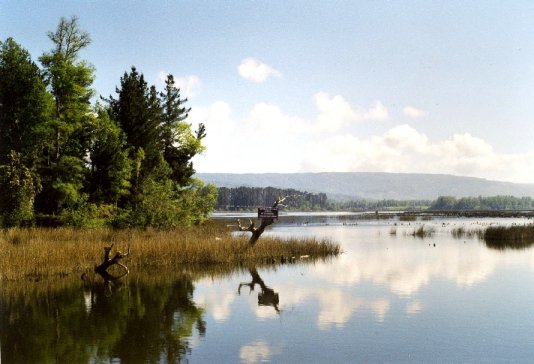
| Landscape of the Carlos Anwandter Ramsar Site (Coniferous and Notophagus forest, reeds and open water) | Paisaje del Sitio Ramsar Carlos Anwandter (bosque de coníferas y Notophagus, juncales y aguas abiertas) |
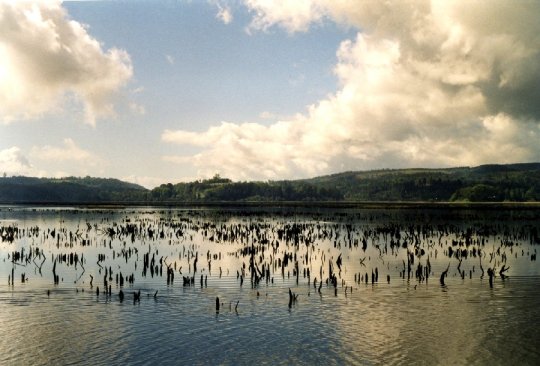
| Remains of submerged trees after the earthquake of 1960 (Carlos Anwandter Ramsar Site) | Restos de troncos sumergidos tras el terremoto de 1960 (Sitio Ramsar Carlos Anwandter) |
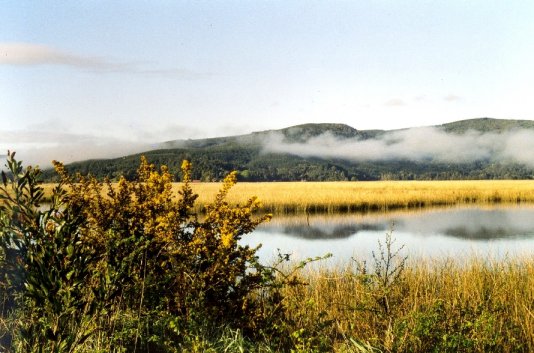
| Ulex europaeus (invasive european species), at the forefront of reeds at Carlos Anwandter Ramsar Site | Ulex europaeus (retamo espinoso, especie invasora europea), en primer plano sobre el Sitio Ramsar Carlos Anwandter |
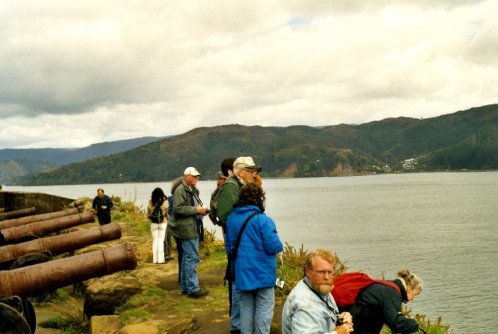
| A group of birdwatchers attending the congress waits for seabirds to appear off the Spanish fort of Niebla, in the coast near the city of Valdivia | Un grupo de observadores asistentes al congreso espera a las aves marinas en el fuerte de Niebla, cerca de Valdivia |
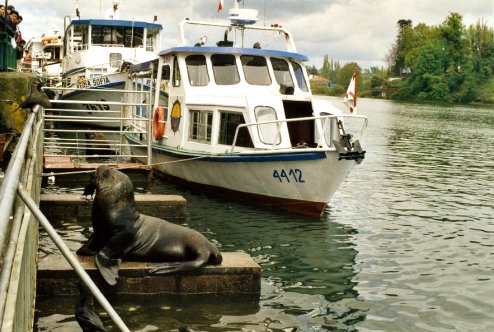
| Cormorants and sealions place themselves in wonderful position to take any fish available to them in Valdivia's market | Los cormoranes y los leones marinas esperan un bocado al lado del mercado de Valdivia |
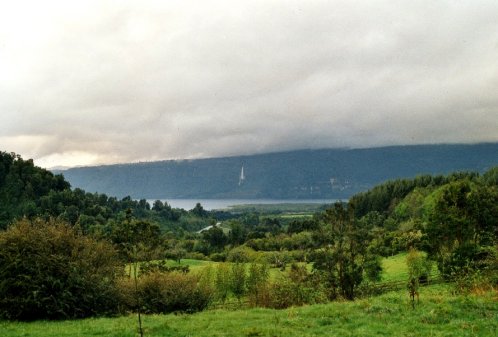
| Scenery for the congress: The Puyehue Lake in front of the Termas de Puyehue Hotel | El escenario de fondo del congreso: El lago Puyehue en frente del hotel Termas de Puyehue |
-- report and photos (10 October 2003) by Iván Darío Valencia,
Ramsar Assistant for the Americas